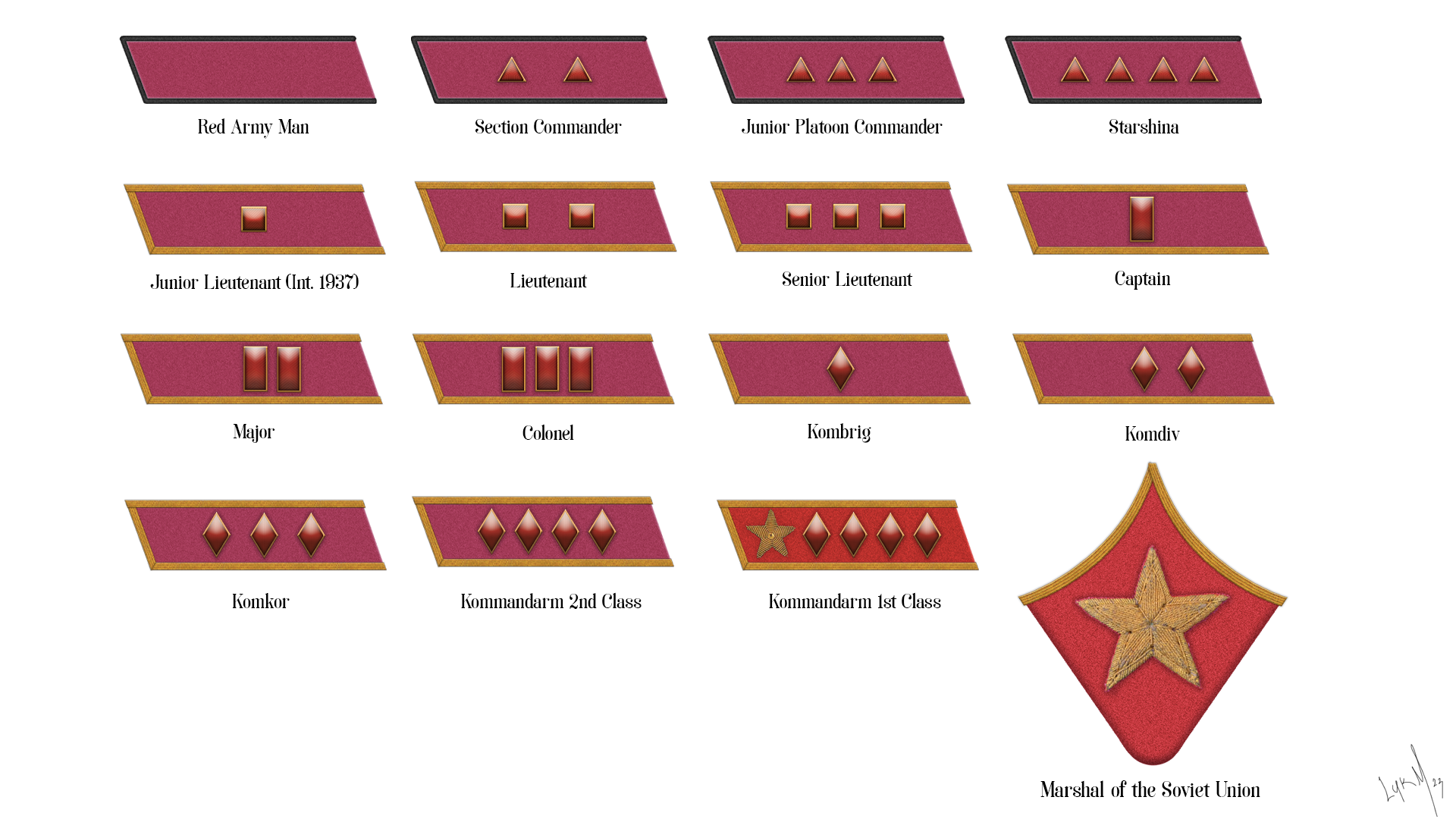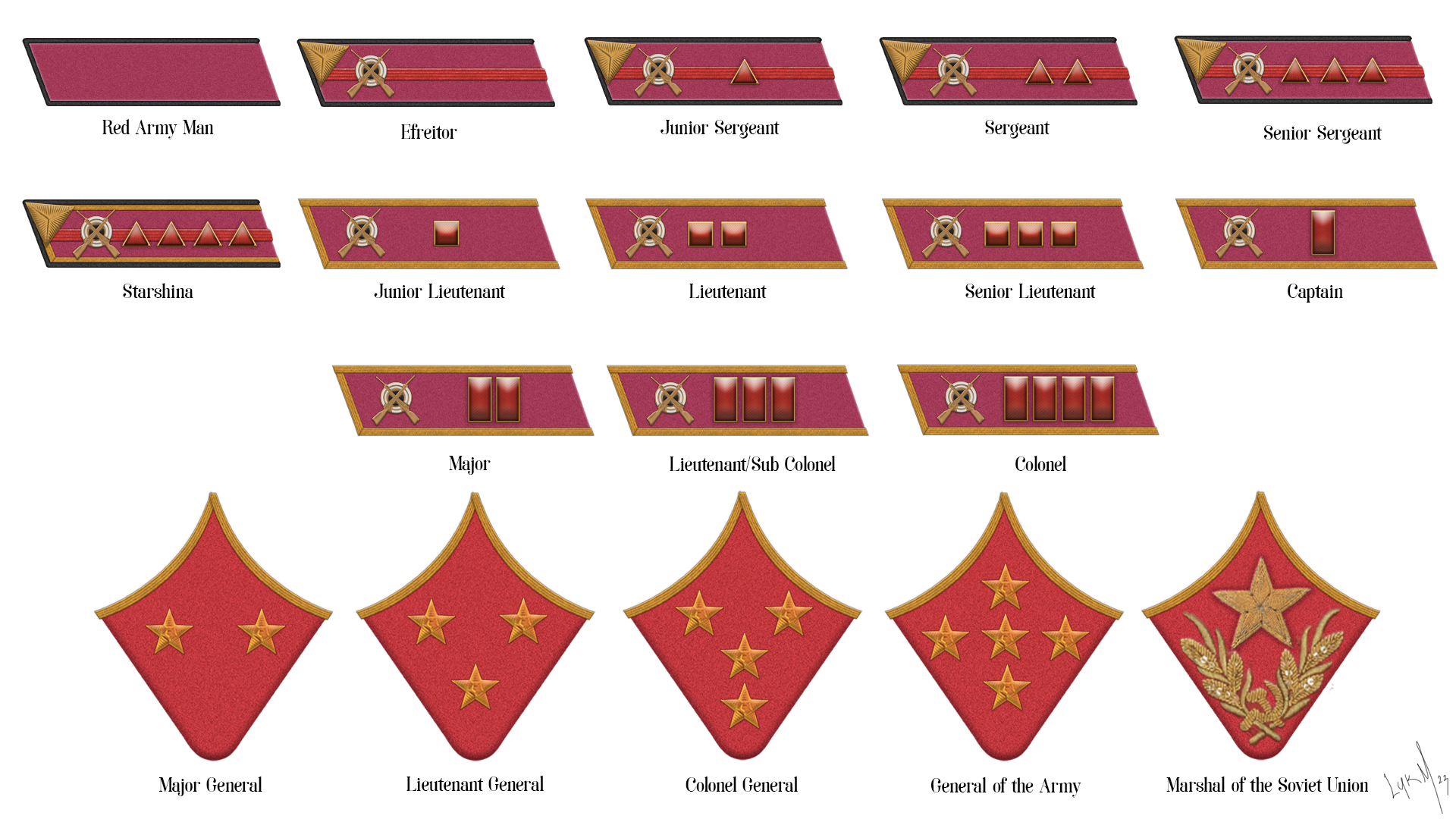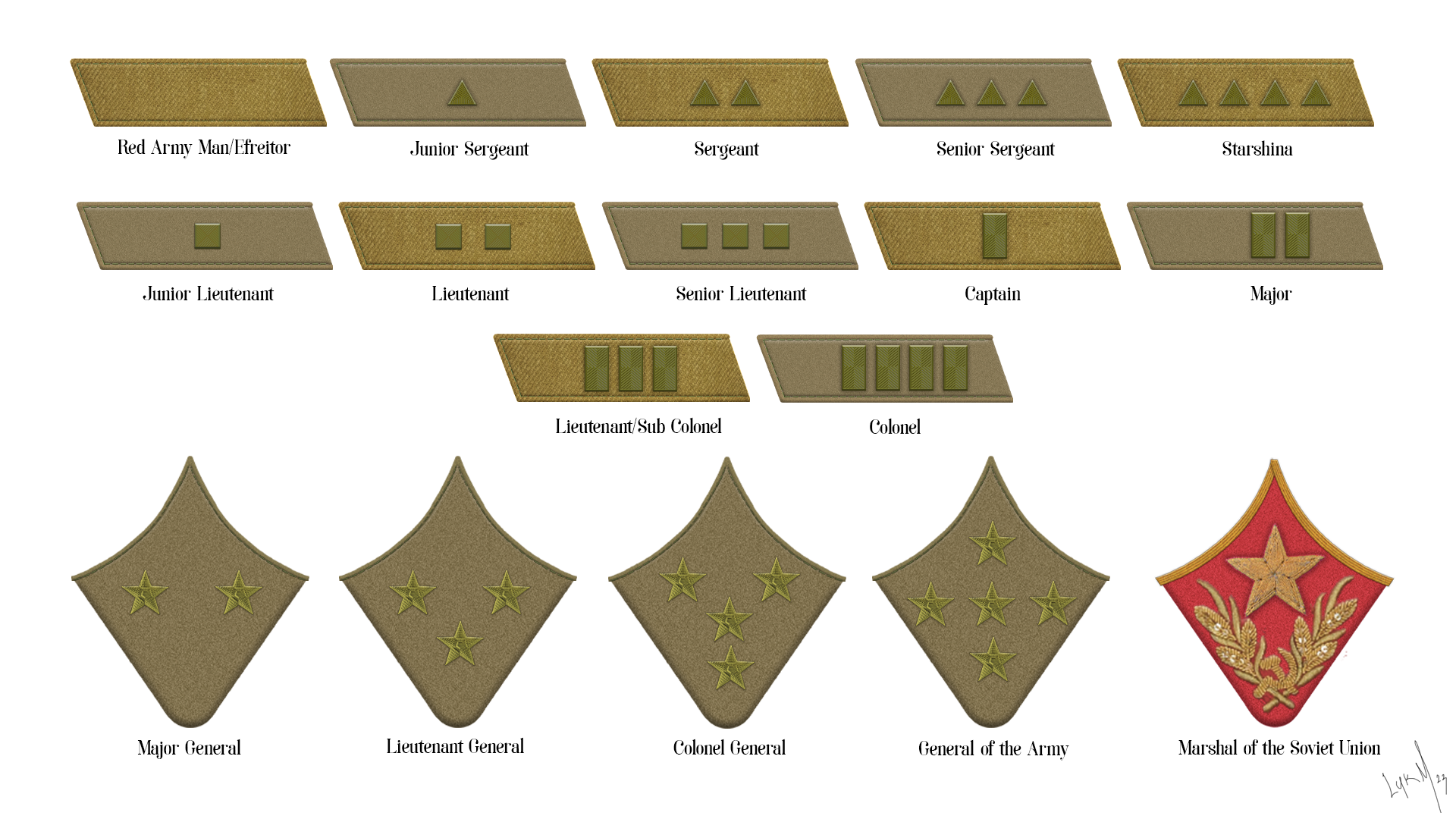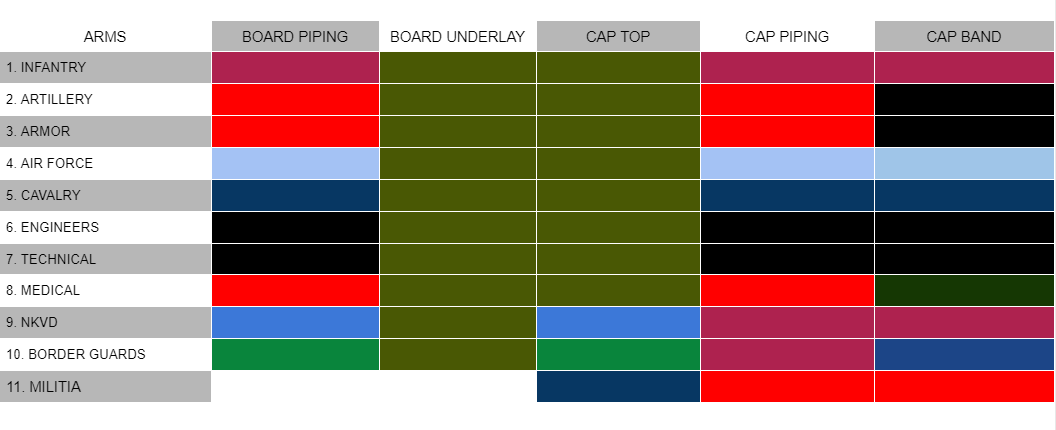By Lukas Maksin and Max Schmidt
The Red Army saw massive reform and modernization effort in the 1930s. The changes in ranks and rank insignia of the Red Army between 1935 and 1945 were no exception to this, and were characterized by these reforms leading up to Operation Barbarossa (The invasion of the Soviet Union in June 1941) and the war of national survival that would envelope the Soviet Union for the next 4 years.

